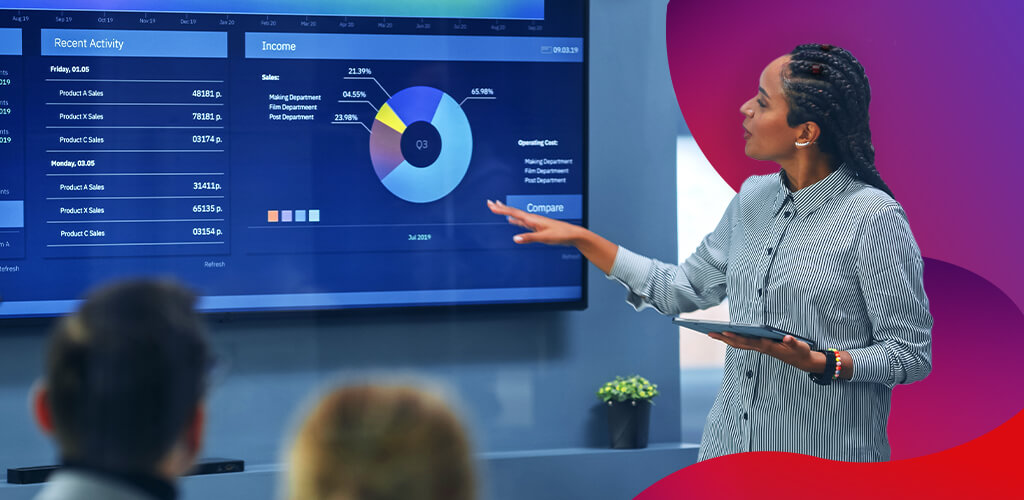Understanding the Need for an Employee Stock Program
Employee stock programs (ESPs) provide businesses with an excellent opportunity to reward their staff for their hard work. ESPs can be an effective form of motivation and engagement by giving employees a tangible stake in the company. These programs encourage employee loyalty and are attractive to potential job seekers; offering an ESP can give businesses a significant advantage when recruiting top talent.
In addition to being attractive to prospective hires, ESPs create an atmosphere of trust and transparency between employers and employees. This allows for more open communication, fostering a healthy working relationship. Moreover, it is essential for companies considering setting up an ESP program to understand the challenges of designing and executing it; these hurdles will help businesses ensure that any employee stock program implemented is successful.
The Challenges for Private Businesses Establishing ESPs
Developing an Employee Stock Program can be a complicated endeavor for private businesses. Although the long-term rewards are apparent, persuading management to commit to long-term equity planning is not always straightforward. This process requires expertise in financial management and administration and the ability to communicate its value to employees. Moreover, there are costs associated with implementation, such as legal fees and technology investments (stock option management software), that must be considered.
Fortunately, several successful ESPs have been established by companies like Dropbox, which provide a blueprint for other organizations looking to do the same. Their experience reveals the importance of understanding employee needs when setting up an ESP and providing education on financial literacy, so their decisions related to managing stock options are informed and secure. Additionally, they emphasize creating transparent communication between HR departments and employees, so everyone is aware of their rights under the plan, plus any changes made along the way.
Despite these daunting challenges, private businesses can establish an Employee Stock Program that meets all requirements while benefiting employers and employees. By dedicating resources towards understanding employee needs, providing training on financial literacy, fostering open communication channels between HR departments and employees, and investing in necessary resources such as legal fees or technology investments, companies can create a successful ESP program with long-term benefits for all involved.
Challenge 1: Management Resisting Long-Term Equity Planning
Convincing management to invest in long-term equity planning can be a significant challenge for private businesses seeking to implement an Employee Stock Program (ESP). Many times, management may be reluctant to bear the program’s financial burden or view it as a distraction from their daily operations. Fortunately, understanding the importance and advantages of such a plan can help managers get on board with enthusiasm.
An ESP provides managers with insight into how their decisions will shape the company’s long-term value. When they realize their actions directly affect employee stock ownership, they are more likely to make sound decisions for future growth and success. Similarly, when employees have a vested interest in the business through equity stakes, they are extra motivated to work hard towards achieving goals, ultimately leading to increased productivity and performance.
In addition to creating loyalty between employers and employees, long-term equity plans offer various financial benefits for everyone involved. Companies may take advantage of federal and state incentives such as ESOPs (Employee Stock Ownership Plans) or qualified retirement plans like 401(k), resulting in potential tax savings opportunities for both parties. Furthermore, these programs reduce turnover costs while increasing job satisfaction among workers due to personal investments made by staff members over time.
Examples of companies who have overcome opposition from management towards long-term equity planning demonstrate its great potential; Microsoft Corporation doubled its profits within two years after introducing an Employee Stock Program, whereas Adobe Systems Incorporated created an innovative program allowing all staff members—from entry-level positions up—to purchase shares at discounted prices via pre-tax contributions from payroll deductions over several years period; this resulted in higher retention rates and improved morale amongst its workforce worldwide.
These positive outcomes associated with ESPs should be enough evidence that investing in long-term equity planning is beneficial for private businesses overall; not only does it generate loyalty between employers and employees, leading to better performance, but it also offers financial rewards due to tax savings opportunities available through government incentive programs. Therefore, recognition of these advantages allows private businesses to introduce successful employee stock programs without resistance from management.
Challenge 2: Training and Education
One of the most essential challenges businesses face when implementing an Employee Stock Program (ESP) is the need for proper employee training and education. Without a well-trained workforce, maximizing the potential of an ESP will be challenging, leading to decreased productivity and customer dissatisfaction. Businesses must understand the different types of training available and how to implement a comprehensive program effectively.
For training to be practical, it must involve both on-the-job instruction and online courses. On-the-job training provides employees with the hands-on experience to better understand their roles within an ESP. Online courses can also help improve employee knowledge of financial literacy, stock market basics, taxation laws, etc. These courses help employees better understand their roles in an ESP and empower them with additional skills that can be applied outside of work.
Businesses should also consider providing resources or creating initiatives that give employees access to professional advice from financial advisors or industry experts on investing in stocks. This helps ensure that employees have access to reliable information regarding their investments under the ESP program and helps build trust between employers and employees. Additionally, businesses should provide regular feedback on performance so that employees feel encouraged and motivated throughout their time at the company.
Finally, businesses should develop a system for tracking progress toward goals set by participants in the ESP program. This will help employers monitor performance levels among their team members while providing additional motivation for individuals close to achieving those goals. All participants must be aware of any changes or updates made to the program so that everyone has clear expectations regarding their objectives as part of the initiative.
Proper training and education are essential for any business looking to successfully implement an Employee Stock Program (ESP). With careful planning and implementation of programs such as online courses or access to professional advice from experts in the field, businesses can ensure that all participants have access to reliable information, which will lead not only to improved engagement but increased productivity as well as customer satisfaction amongst teams utilizing an ESP program within their organization.
Challenge 3: Pulling Resources Together
Gathering the appropriate resources to launch an Employee Stock Program (ESP) can be a complex task, yet one that is vital for successful implementation and long-term viability. Not only do you need dedicated personnel who are knowledgeable about the company’s goals, but also legal advice, financial expertise, and communication/marketing professionals to ensure that it is appropriately structured. Even if a firm has experienced operations personnel, they may find compiling all these elements in one place challenging.
Staffing an ESP necessitates both commitment and knowledge of the firm’s objectives. It is essential to assemble a team with varied abilities who can work together to achieve this end goal – creating an advantageous plan for everyone involved. Personnel should include HR and finance pros and those from other departments who understand the company culture and are adept at communicating with employees.
In addition, seeking professional legal counsel is critical to guarantee that applicable laws and regulations are followed before initiating an ESP. Financial savvy must be tapped when crafting your equity plans so all parties comprehend their roles in the program. Furthermore, communication experts must create materials that explain the program concisely, while marketing specialists devise campaigns aimed at engaging potential participants before rollout.
Creating a timeline and budget for execution is likewise imperative when collecting resources for an ESP – helping keep costs under control while ensuring everything runs smoothly from start to finish during its creation process. Also important is considering its long-term sustainability since it cannot be established overnight – careful planning needs to go into every step of its development for success over time.
In conclusion, assembling resources for an Employee Stock Program (ESP) can be complicated yet rewarding if done correctly – especially considering its potential benefits on employee morale and employer-employee trustworthiness. With prudent preparation, access to suitable talent, plus clear communication throughout this endeavor – any business or organization has what it needs to construct their own ESP program successfully.
Conclusion
When businesses are looking to set up an Employee Stock Program, they must have the proper support and resources. This means having a well-structured plan of action, access to educational materials and training programs, and transparency between HR departments and employees. Additionally, effective communication with staff about their financial literacy and understanding their needs are essential components for any business wanting to establish a successful program.
In summary, Employee Stock Programs can be incredibly beneficial for both employers and employees alike if implemented correctly. As well as helping retain talent and motivating staff members, businesses can gain long-term equity planning by investing in this program. With the proper guidance and resources in place, creating an ESP that will bring positive outcomes for all involved parties is possible.

Tom Kirby
Tom Kirby serves as the Head of Global Sales at Astrella. With more than 20 years of experience in sales and business development, he is dedicated to fostering strong client relationships and assisting both private and public companies in understanding and effectively communicating their value.
- Tom Kirby#molongui-disabled-link
- Tom Kirby#molongui-disabled-link
- Tom Kirby#molongui-disabled-link
- Tom Kirby#molongui-disabled-link








